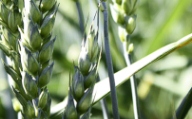Advantages of biorefining
Feed wheat, which is the feedstock used in Hveiti’s production process, has the advantage of being a feedstock, which is traditionally only used partly, but through biorefining can be used in a more optimal way. The high utilisation degree is due partly to the separating of the grain, and partly to the fermenting process, which makes the protein digestible.
The fermenting process makes the protein easier to digest and more lenient for animals’ intestinal systems (especially the alimentary canal of pigs is very sensitive, whereas the one of cattle is more hardy.) A fermented product corresponds to the difference between eating oatmeal as opposed to eating raw flakes of oatmeal.
High digestibility
An added environmental bonus of the high digestibility is a lowered release of nitrate (nitrogen) through the slurry, and thereby a smaller risk of nitrogen washout.
Better phosphorus use
A better use of phosphorus is another advantage of biorefining.
Phosphorus is an element tied to protein. Through a fermenting process, the absorption of the protein is improved and thereby also the absorption of phosphorus, which means that the need to mix phosphorus with the feed is lowered.
This results is both an environmental and economic bonus, as the discharge of phosphorus into nature, which is a widespread problem, is lowered.

A fermented product corresponds to the difference between eating oatmeal as opposed to eating raw flakes of oatmeal.
Follow the developments within biorefining. hveiti regularly informs about our efforts to improve the environment.




